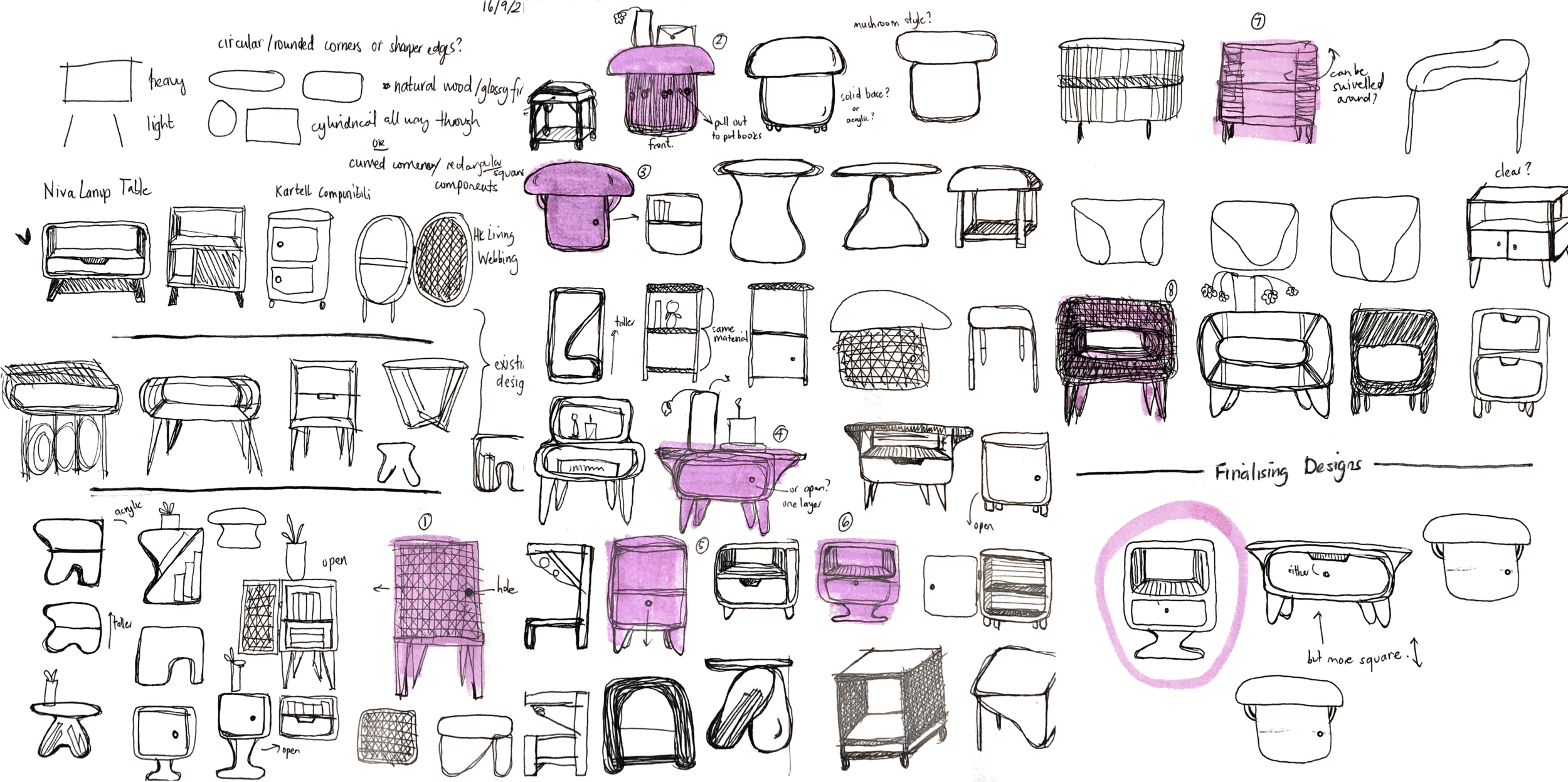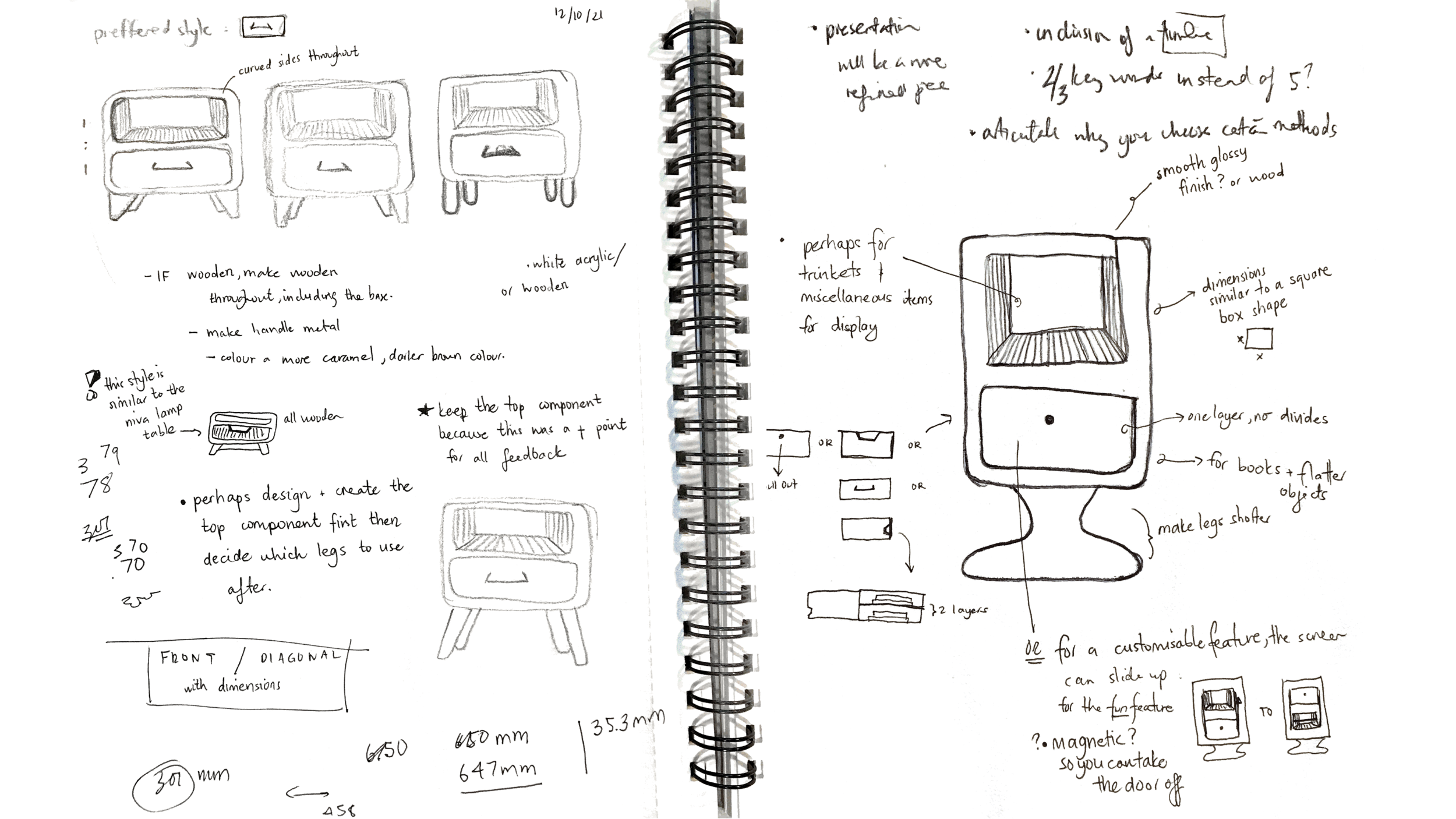iterations of side table designs. The chosen design is the table that has been circled in purple.
The second semester marks the execution phase, taking a deep dive into looking how utility and style worked together through everyday objects that we find in our household.
The everyday object I focused on was a side table.
From this, I developed a design template and sketches of how I envisioned it would look like. I questioned my chosen demographic for feedback on my sketches as well as general questions of how side tables operated in their lives. From this feedback, I improved and altered my design accordingly, drawing it out digitally to create a poster and mockup in Photoshop.
Research and Development
The initial research component involved looking into Don Norman’s ‘The Design of Everyday Things’ (2013) and Deana Mcdonagh’s ‘Design and Emotion, the experience of everyday things’ (2003). Norman states that experience is critical, for it determines how fondly people remember their interactions. Mcdonagh suggests that designers should create products that are not only useful, but also enjoyable. Doing so will stimulate emotional bonding between consumers and their products.
I took inspiration from existing side tables, sketched my own iterations, then narrowed it to 7 different designs that I thought seemed more interesting.
To aid my development process, I produced a design template which consisted of an abstract, problem statement, demographic considerations, limitations, extracting of feedback/analysis and a criteria to evaluate success. The criteria to evaluate success was based on Norman and Mcdonagh’s readings.
Afterwards, I sent a questionnaire to 12 individuals in the age range of 20-30 years old to get feedback on side tables in general and feedback on my own design. It was a mix of short answer, multiple choice and scale questions, with 7 questions in total.
From the feedback, more than half the response chose style as the most important aspect when choosing a side table, followed by usability. On a scale of 1-5 (5 being the highest):
8/12 people chose 4 or 5 in the importance of a side table giving a sense of pleasure and excitement, but
75% chose 3 or lower for it bringing physical/emotional comfort.
This feedback was transformed into an affinity diagram.
Sketches of further iterations, changing the design of the legs and considering the open and drawer compartment.
From my grouping of observations and problems in the affinity diagram, I came to three main points to progress with:
Both the open/closed component are enjoyable features that need to consider the comfort of the user interacting with it
Needs to be a better connection between the top and bottom aspect, to make it harmonious overall
Style of the product is generally considered retro and stylish
Final Stages
Taking the feedback of the questionnaire regarding the issue between the top and bottom parts, I changed the design of the bottom into something that complimented the top half better. I also realised that this style mirrored closely to the Niva lamp table which has a Scandinavian style.
My criteria to evaluate success, and how it changed over time when I reached the final stages of the project due to the feedback given in the questionnaire.


